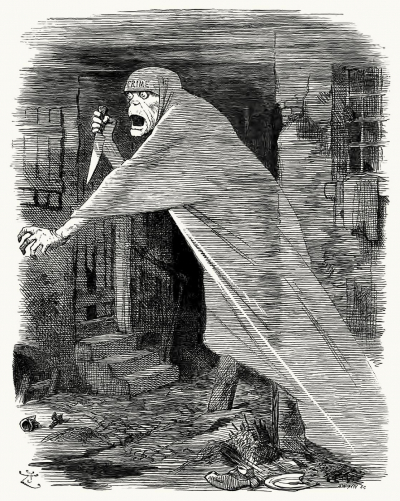Whitechapel is a district in East London and the future administrative centre of the London Borough of Tower Hamlets. It is a part of the East End of London, 3.4 miles (5.5 km) east of Charing Cross. It was part of the ancient parish of Stepney, Middlesex. It was split off as a separate parish in the 14th century. It became part of the County of London in 1889 and Greater London in 1965. Because the area is close to the London Docklands and east of the City of London, it has been a popular place for immigrants and the working class.
The area was the centre of the London Jewish community in the 19th and early 20th century, and the location of the infamous 11 Whitechapel murders (188891), some of which were attributed to the mysterious serial killer known as Jack the Ripper. In the latter half of the 20th century, Whitechapel became a significant settlement for the British Bangladeshi community, and has the Royal London Hospital and East London Mosque.
The Whitechapel murders were committed in or near the largely impoverished Whitechapel district in the East End of London between 3 April 1888 and 13 February 1891. At various points some or all of these eleven unsolved murders of women have been ascribed to the notorious unidentified serial killer known as Jack the Ripper.
Most, if not all, of the victims—Emma Elizabeth Smith, Martha Tabram, Mary Ann "Polly" Nichols, Annie Chapman, Elizabeth Stride, Catherine Eddowes, Mary Jane Kelly, Rose Mylett, Alice McKenzie, Frances Coles, and an unidentified woman—were prostitutes. Smith was sexually assaulted and robbed by a gang. Tabram was stabbed 39 times. Nichols, Chapman, Stride, Eddowes, Kelly, McKenzie and Coles had their throats cut. Eddowes and Stride were murdered on the same night, within approximately an hour and less than a mile apart; their murders are known as the "double event", after a phrase in a postcard sent to the press by an individual claiming to be the Ripper. The bodies of Nichols, Chapman, Eddowes and Kelly had abdominal mutilations. Mylett was strangled. The body of the unidentified woman was dismembered, but the exact cause of her death is unclear.
The Metropolitan Police, City of London Police, and private organisations such as the Whitechapel Vigilance Committee were actively involved in the search for the perpetrator or perpetrators. Despite extensive enquiries and several arrests, the culprit or culprits evaded capture, and the murders were never solved. The Whitechapel murders drew attention to the poor living conditions in the East End slums, which were subsequently improved. The enduring mystery of who committed the crimes has captured public imagination to the present day.

1888Apr, 3
The first of eleven unsolved brutal murders of women committed in or near the impoverished Whitechapel district in the East End of London, occurs.
Choose Another Date
Events on 1888
- 16May
Electric power transmission
Nikola Tesla delivers a lecture describing the equipment which will allow efficient generation and use of alternating currents to transmit electric power over long distances. - 31Aug
Jack the Ripper
Mary Ann Nichols is murdered. She is the first of Jack the Ripper's confirmed victims. - 4Sep
Kodak
George Eastman registers the trademark Kodak and receives a patent for his camera that uses roll film. - 8Sep
Annie Chapman
In London, the body of Jack the Ripper's second murder victim, Annie Chapman, is found. - 30Sep
Elizabeth Stride
Jack the Ripper kills his third and fourth victims, Elizabeth Stride and Catherine Eddowes.

 English
English  español
español  français
français  português
português  русский
русский  العربية
العربية  简体中文
简体中文 